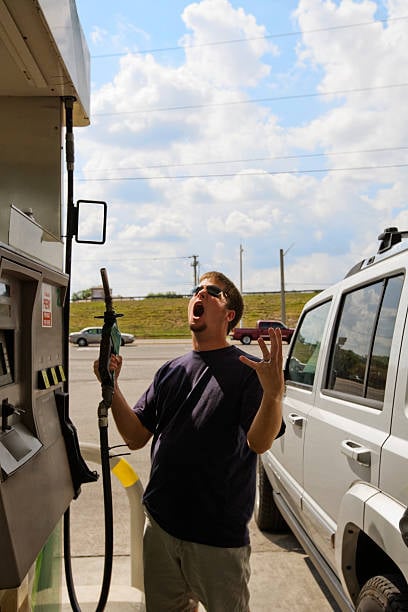Going Green: Shedding Light on Practical Actions for Convenience Stores

Convenience stores come in many different configurations. Many dispense fuel. Some offer car washes. More have begun implementing proprietary foodservice programs and quick-serve restaurant (QSR) outlets. Many are open 24x7. Considering the variety of convenience stores in existence, taking a holistic approach is best when thinking about taking the plunge to go green.
By reducing unnecessary waste, convenience stores can trim operating costs and increase their appeal to environmentally conscious consumers who view ‘going green’ as more than just a trend.
Through the implementation of sustainable practices, convenience stores can become more efficient and save some serious coinage in the process. The small business owner may think the cost and trouble of going green aren't worth the return, but when margins are tight, convenience stores should leave no stone unturned to produce a profit.
A number of advantages exist for businesses who are thinking about going green — from tax advantages to an improved workplace. Let’s take a look at a few low-to-no-cost strategies aimed at identifying ways convenience stores can capitalize on going green and be seen as models for sustainable design.
Assess Your Situation and Develop a Plan
You’ve made the decision to go green, now what?
First, you’ll need to understand how to do it right, which starts by organizing your vision of sustainability and gathering people from different parts of your company so that you can conduct a thorough (SWOT) Analysis — a useful technique for understanding your Strengths and Weaknesses, and for identifying both the Opportunities open to you and the Threats you face when thinking about going green.
Having a well thought out plan will force you to methodically and objectively look at what you are working with and what is available on the market to help your green initiative.
Are employees turning off lights in parts of the store when not in use? Do walk-in units have strip curtains to reduce energy loss during reloading? Is the concrete surface coated with a high-reflective coating? Does it make financial sense to invest in solar panels.
These are all questions that convenience store owners should discuss during the SWOT Analysis process.
Managing and Reducing Energy Costs
According to E Source, a utilities research and consulting firm based in Boulder, Colorado, reducing energy expenditures and improving efficiency can increase profits by as much as 10%. Did you know that many utility providers offer commercial energy audits and provide recommendations of ways to reduce costs? Give yours a call!
While lighting is crucial to making merchandise attractive, and it provides a sense of security under forecourt canopies, it does not have to come at a high cost.
The Energy Information Administration (EIA) reports that a typical convenience store in the U.S. uses 52.5 kilowatt-hours (kWh) of electricity per square foot — 3 times more energy per square foot than any other commercial business, tying restaurants for the top spot.
Lighting and refrigeration make up more than 75 percent of electricity consumption in convenience stores, offering a significant opportunity for saving energy and money. If your equipment is aging, consider investing more for a high-efficiency replacement. For inexpensive and quick fixes that can yield big results, here are five tricks you can use to reduce energy costs:
- Replace incandescent light bulbs with screw-in CFL’s.
- Install occupancy sensors in storage rooms, back offices, or restrooms.
- Use LED fixtures in place of neon lighting to accentuate exterior signage.
- Routinely check refrigeration and HVAC systems for fluctuations in temperature, air leakage, refrigerant charge, dirty filters, and debris in condenser coils.
- Identify long-term solutions like electronically commutated motors for HVAC air handler units, replacing T12 fluorescent lamps with high-performance T8 lamps, and using smart lighting design in parking lots to shed the correct amount of light in the right location.
Many of these energy savings tips can be done through facilities management software which can help enhance equipment performance, provide operational transparency, and reduce energy expenses.
Putting a Cap on Water Usage
A 2007 study commissioned by the Environmental Protection Agency (EPA) discovered the average convenience store consumed an average of 1,683 gallons of water per day — an amount that increases dramatically in stores where irrigation systems and car washes are installed.
Convenience stores should look to a few simple, yet often forgotten, ways to avoid flushing away profits:
Restrooms are one of the most frequented areas by customers. So much so, that in 2018, a GasBuddy report showed a 33% increase in foot traffic at convenience stores whose online restroom ratings were above verage.
While cleanliness is key for customer satisfaction, cost savings exist for convenience stores. High-efficiency fixtures and toilets that require no more than 1.3 gallons per flush accompanied with urinals that flush 1 gallon or less can help control water usage. Also, if codes and health departments permit use non-potable water for flushing. If you own or operate a travel plaza or truck stop with showers, use shower heads that allow for no more than 2.0 gallons per minute.
If your store is using a cube machine make sure they are ENERGY STAR Certified. Nugget or flake ice machines are preferred over cooling-tower loops, because they are air-cooled and expel warm air outside.
If you are installing a carwash, it pays to make an investment in an efficient one— one that adheres to the Alliance for Water Efficiency’s standard of no more than 40 gallons of make-up water per vehicle.
Install automatic-shutoff and solenoid valves on all hoses and water-using equipment. For janitorial sinks, make sure faucets do not exceed 2.2 gallons per minute (gpm).
Finally, remember to always keep an eye out for leaky faucets, running toilets, and broken pipes. A running toilet, whose reservoir never settles, can significantly increase your water bill.
Shed Energy Usage by Deflective UV Rays
Reflective concrete and roof coatings are resistant to environmental elements such as moisture, water, and sunlight. The heat transfer to the store’s interior is decreased, which in turn reduces the amount of energy needed to cool the space. When it comes to roofs, recommended coatings are dependent on the existing roof material. Most surfaces work best with a coating made of silicones, acrylics, urethanes, and other materials, although there are exceptions. Asphalt roof surfaces, for instance, often require an aluminum coating, according to the Roof Coatings Manufacturers Association. Contact your local professional for material selection and application.
Tint your windows to keep sun rays out and customers cool. If you’re building a new store or upgrading windows, consider using windows that auto-tint in response to different light intensities. A cheaper short-term method that can help remedy cooling costs is putting an adhesive window film over your existing windows. The International Window Film Association can provide guidance for commercial applications.
Tax Advantages
Going green can be good for the planet and also for your tax bill. A number of federal and state business tax credits, deductions, and grants are available.
The U.S. federal government allows businesses to take a tax credit for specific energy-saving investments in properties that can be depreciated or amortized. In 2015, tax credit changes made available a 30% tax credit for businesses that install, develop, and/or finance solar energy property.
As an example, Florida allows companies that produce and sell electricity from a renewable energy facility to take a corporate income tax credit. California has cracked down on emissions allowances, so companies such as General Electric and FedEx have incorporated green technology in order to comply with state standards and reduce emissions.
The Small Business Administration (SBA) offers a variety of federal tax credit forms and documents that provide guidance for filing eligibility. Convenience stores should consult with a tax professional for additional tax advantages.
Finally, capitalizing on the green initiative is good PR, and it’s good for your brand.
Once you've “gone green” and begun to practice sustainability, don't keep it a secret! Make a splash about your new green initiative to staff, vendors, and customers through websites, social media, and by contacting the local press. Letting them know the store is committed to saving the environment and making responsible choices is great for business.
At PWM, we believe in sustainability — a trait that is evident in our products and serves as a foundation for our progressive approach to energy usage. As a privately owned, global player we have led the industry in the use of SMD technology since 2006. To ensure we deliver on our promise, we produce our own sign components at our headquarters in Germany, therefore controlling all aspects of sign quality. All of our systems – from the sign module to the control hardware and the software – are perfectly coordinated. It is this approach that makes us proud to play a small role in helping convenience stores in their journey towards energy-efficiency.
With PWM, the future — and our planet — look bright.
Read more:
https://www.mindtools.com/pages/article/newTMC_05.htm
https://www.sba.gov/content/state-and-local-energy-efficiency-programs






